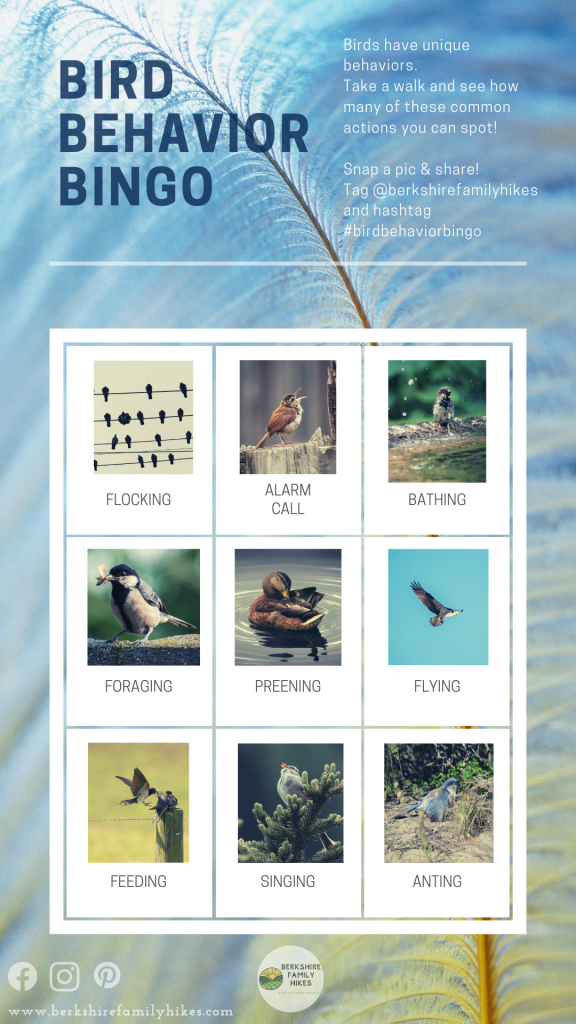The bird world is full of some wacky stuff. From Anting to Drumming, there are so many things to discover when you take a moment to observe.
Read a bit about some of these behaviors and then take it outside! Print out the Bird Behavior Bingo worksheet and see how many of these behaviors you can spot on a walk around your neighborhood, local park, or wildlife sanctuary.
If you snap any pictures or videos, we’d love to see! Tag @berkshirefamilyhikes on Instagram or Facebook and use the hashtags #birdbehaviorbingo and #berkshirebirds
- Flocking – Many species find safety in numbers in a flock. A flock can consist of one species, like Canada geese, or several; birds like grackle will tolerate many other species in their group. In a flock, many eyes and ears keep the group aware of any dangers present, as well as where to find food. Sometimes a flock will even band together to scare away predators.
- Alarm Call – Birds also sound alarm calls to warn the flock. Most calls are short and simple, and are usually similar from species to species
- Bathing – Whether it’s courtin’ time or not, almost all birds try to keep themselves clean. Most do so by bathing in water, while others roll around in dirt for a dust bath.
- Foraging – This includes scratching at the dirt to loosen up seeds, bugs or other food or gleaning/picking food from a surface like a tree, branch, or leaves.
- Preening – When they bathe, birds often get rid of feather parasites. By preening their feathers with their beaks and feet, they remove more parasites, arrange feathers, and remove dirt.
- Flying – Some birds, like vultures, can catch air currents with their wings outspread and travel by soaring. Others fly by flapping their wings.
- Anting – Birds sometimes sit atop an anthill and let the ants crawl over their wings, or pick them up in their beaks, crush them and rub them over their feathers. See this post for more info: Bird Brains – Anting Antics Activity
- Feeding – Common feeding behaviors include ground feeding, canopy feeding, bark feeding, predatorial feeding, and aerial feeding.
- Singing – Bird songs are often very complex, and are so distinct a number of species can be identified from their songs. Normally, only adult males sing, and typically only during mating season.
Go on a bird behavior walk in your neighborhood or at a local park. Look for birds foraging, preening, moving in a flock, or sounding the alarm for predators.
For a free printable bingo sheet, click here or the image below!
 |



